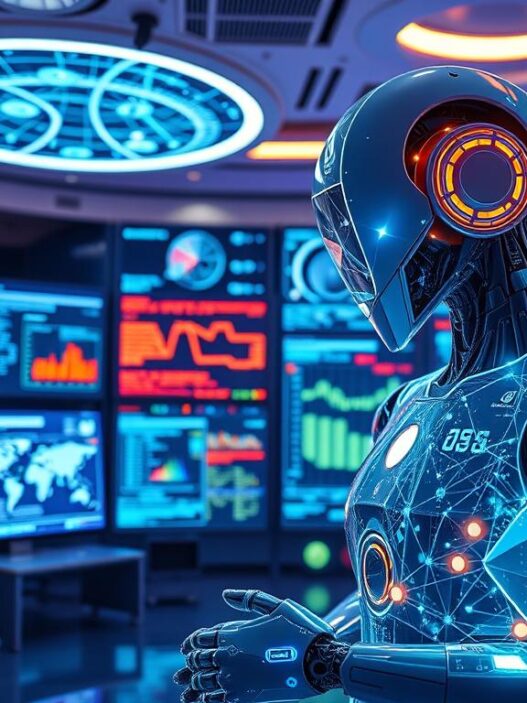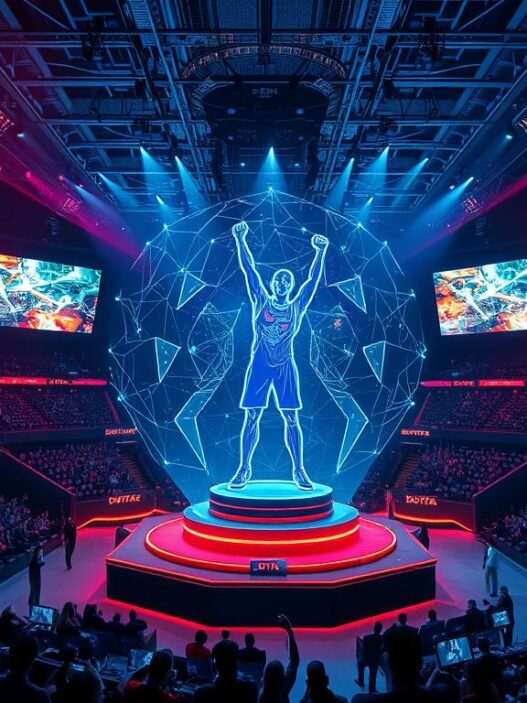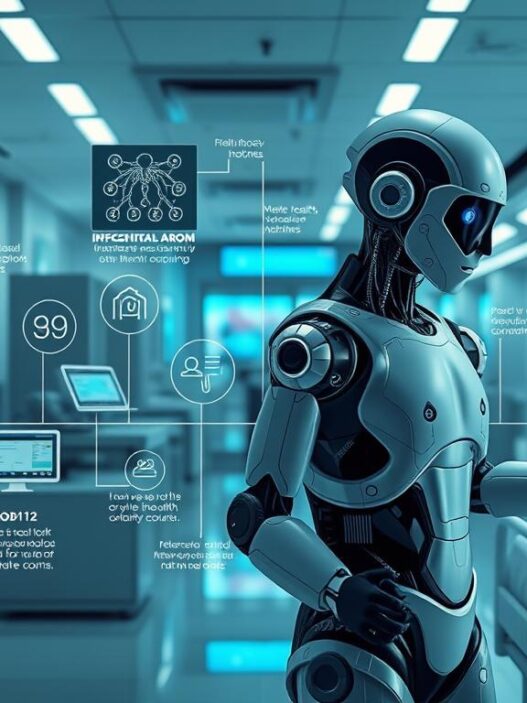OpenAI has made a huge step forward in artificial intelligence with their Generative Pre-trained Transformer 2 (GPT-2). This AI is a major leap forward. It has 1.5 billion parameters and can do things like summarize texts and create stories1. GPT-2 1.5B moves past old models, showing us a world where machines might understand and make human language very effectively2. Yet, it also brings up worries about its ability to create believable, large-scale texts3.
Key Takeaways
- GPT-2 holds an unprecedented 1.5 billion parameters for complex language tasks1.
- Its mastery includes text generation and burgeoning applications for chatbots1.
- The AI’s revolutionary capabilities stand as a testament to modern engineering and the accelerating pace of natural language processing development2.
- Despite its power, GPT-2’s potential for generating misleading or manipulative content sparks debates on ethics and online safety3.
- OpenAI’s strategy has reflected caution, underscoring the importance of responsible AI deployment3.
An Overview of GPT-2 and Its Foundational Models
OpenAI introduced GPT-2 and marked a big step forward in AI for creating text. It builds on the work of its forerunner, GPT-1. With GPT-2, natural language processing (NLP) tasks got much better.
The Evolution from GPT-1 to GPT-2
GPT-1 set the stage with a model that had 117M parameters and used the BooksCorpus dataset. It did better than other NLP models on various tests4. Moving to GPT-2, the increase was huge to 1.5 billion parameters5. It used the bigger WebText dataset from over 8 million documents4. This jump expanded both the data input and the model’s complexity. It now had 48 transformer layers and a bigger batch size. This change allowed for deeper understanding and better text creation45.
The Generative Pre-trained Transformer Architecture Explained
At the heart of GPT-2 is a sophisticated transformer structure. Different from past models, GPT-2 uses multiple transformer layers. It also uses self-attention to better predict text generation. This method, along with more trainable parts, pushed language models to new heights.
Understanding Large Language Models and Their Capabilities
GPT-2 is known for better text creation and can handle more complex tasks. These include translating languages and creating content. This is thanks to its advanced architecture that works with a wider context46.
OpenAI has shown how to use GPT-2 on a big scale with tools like Docker and Kubernetes. This helps in handling various language tasks. For more on moving GPT-2 into real-world use, check Emmanuel Raj’s post on LinkedIn.
The Training Process Behind GPT-2: 1.5B release
Exploring the training process of the GPT-2 model is truly intriguing. We see neural network parallelization and natural language processing come together. They make AI strong and savvy. The model trained on the WebText corpus, a big dataset from web pages loved by Reddit users. This dataset is stripped of repeat content and Wikipedia articles. It’s huge, at 40GB7.

The core of GPT-2 training needs lots of resources. OpenAI used 256 cloud TPU v3 cores7. This shows how much they’re willing to spend on AI training, about $256 per hour. It’s a big investment towards advanced AI7.
Moreover, GPT-2 used a special way to read and process its training data7. It used a byte-level version of Byte Pair Encoding (BPE) with a huge vocab size of 50,2577.
- Evaluation metrics for GPT-2 include tests like LAMBADA and WikiText103. They show the model’s skill at understanding and predicting text7.
- Its design for neural network parallelization sped up training. This lets GPT-2 manage long text sequences effectively, up to 1024 tokens7.
Starting with smart data collection and using top tech, GPT-2 shines. It makes complex tasks easy for machines, minimizing the need for human control8.
GPT-2’s Staged Release Strategy and Initial Concerns
OpenAI introduced GPT-2 with a step-by-step approach. This careful method highlighted the importance of being cautious with new AI technologies. They wanted to prevent misuse and ensure that ethical standards were met. Their strategy led to a lot of discussions about the dangers of fake content.
Partial Release: Balancing Innovation and Risk
In February, a simpler version of GPT-2 was released. It was a move to lessen potential dangers. This way, they could better watch how it affected things. Following this, they put out versions that were more advanced, like the one in May with 355M-parameters and another in August with 774M-parameters9. Each step was watched closely to see how it impacted society and ethics.
Responses and Arguments Surrounding OpenAI’s Decision
People had mixed feelings about OpenAI’s careful release. Some thought it was a responsible act. Others felt it went against OpenAI’s goal of openness. A big worry was how well the AI could make up believable text. This brought up fears about how it might be used to spread lies.
Implications of Withholding the Full Model from Public Access
Not sharing the full GPT-2 raised debates about ethics in AI. Critics said this might slow down the work to stop its misuse. Yet, this approach allowed for deep studies on the AI. They came up with ways to find AI-made text with a high success rate of 95% for the 1.5B parameter model9.
These discussions showed how important it is to talk about using AI responsibly. They help shape the rules and ideas for working with AI safely. The goal is to make sure AI helps us without causing harm.
For more insight into OpenAI’s careful plan with GPT-2, check out the documentation on this model10.
In short, OpenAI managed risks carefully with their GPT-2 rollout. This approach sparked needed talks about AI’s ethical use. It shows a growing awareness in making AI advancements thoughtful and safe.
Applications and Potential Misuses of GPT-2
GPT-2 shines with its text generation technology and flexibility in different areas, leading to GPT-2 applications that benefit us. But it also brings AI content creation risks. This shows how advanced AI can be both good and bad.

GPT-2 has pushed forward natural language tasks. It can create from imaginative writing to summarizing data. Thanks to learning from 40GB of varied web texts, it’s top-notch in language and learning1112.
Its uses are wide, boosting things like chatbot talks and making educational stuff.
Yet, we can’t ignore the risks of abuse linked to artificial intelligence safety. GPT-2’s ability to make text look real can lead to false info or fake news. Cases include making up fake stories or pretending to be someone online11.
With its deep grasp of language, GPT-2 could also make spam or slanted political messages12.
- Enhanced chatbot interactions
- Automated customer service responses
- Creative writing aids
- Generation of educational content
To lower these dangers, tight control and strong rules are crucial for moral use. Developers are working on ways to spot AI-made texts. Yet, keeping safety up as technology improves is a constant challenge1113.
In the end, GPT-2 takes artificial intelligence in making detailed text further. Yet, it’s key for makers, scholars, and users to work together. They must ensure the tech is used right and ethically.
Conclusion
GPT-1’s debut in 2018 marked a turning point in artificial intelligence. It led to GPT-2, which has an impressive 1.5 billion parameters1415. This growth highlighted how much smarter and complex AI models were becoming. It also started important talks about the ethics of AI and how GPT-2 might change the tech world. As we look forward to GPT-3 and GPT-4, the challenge is to use them wisely while pushing for new breakthroughs14.
GPT-2 was a big step forward in making machines understand and create text like humans. It started a conversation on how AI and human content might soon become hard to tell apart. The careful way GPT-2 was released shows how important it is to think about safety and ethics in AI. We have to find the right balance for the future of our communication15.
AI is on track to change many fields, with GPT-2 leading the way. It’s going to be part of many tools, from specific models like SORA to broader uses across industries14. It’s up to both creators and the public to steer these changes for the greater good. This ensures we move responsibly towards AI’s full promise.




















